Google Ads attribution models help you better evaluate & optimize the performance of your ads.
In essence, attribution models are a set of rules that determine how credit is assigned to different touchpoints along your conversions.
They shed lights on how your customers interact with your ads before they make a purchase, and which ads have the most impact on their decision.
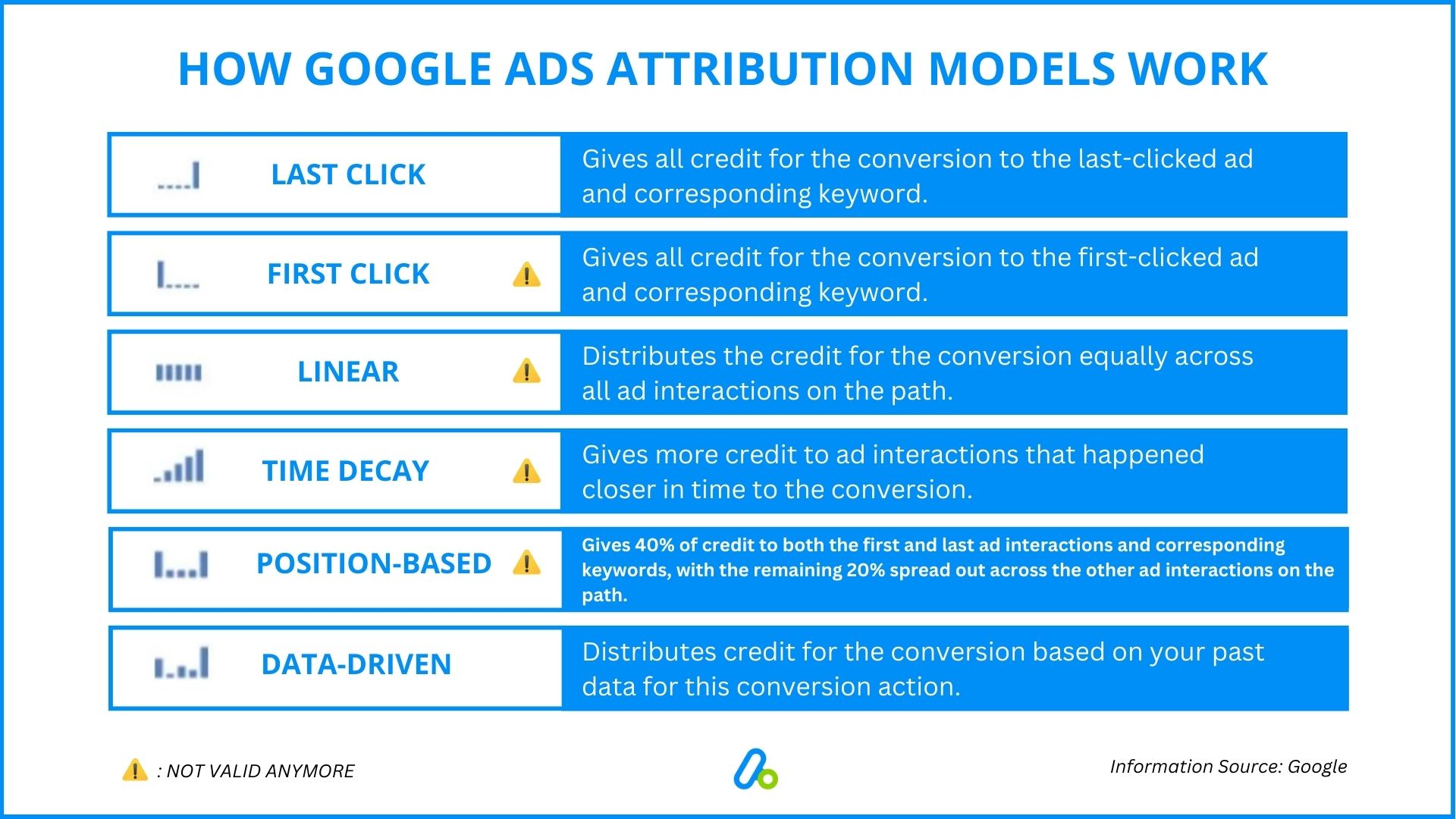
But you probably know Google never hesitates to make changes & updates to their products.
In April this year, they published an announcement to state that four attribution models would be deprecated both in Google Ads and Google Analytics.
In this article, you will be learning about:
- Google Ads attribution models with examples
- What Google planned to change
- How it will affect you as a Shopify merchant
- What you should do
Before we start with the details, make sure you have the Google Ads conversion tracking setup on your Shopify store.
Google Ads Attribution Models Explained
As mentioned above, Google announced to sunset four attribution models this year.
These are the First click, Linear, Time decay, and Position-based attribution models.
Here’s what to expect from this massive change:
Starting from May 2023, Google phased out four attribution models in GA4 and Google Ads.
These are no longer available for any new conversion actions in Google Analytics 4 properties from May 2023, and in Google Ads accounts from June 2023 on.
By September 2023, Google completely retires these models from both platforms.
This means that they disappear from the Model Comparison Report in the Attribution tab and the Overview page in Google Ads.
In addition, any conversion action that is currently using one of these models will automatically switch to the data-driven attribution model.
How Google Ads Attribution Models Work: An Example
Let’s see how each and every model used to work with a detailed example:
Say you own a retro clothing store called “Quality Retro” in London, England.
A customer happens to land on your website by clicking on your ads after searching with the keywords seen below.
Then, they decide to buy some garments after clicking on your ad which appeared with the last keyword which is “best vintage stores in London“.
So, this is how the Google Ads Attribution models used to work according to this example:
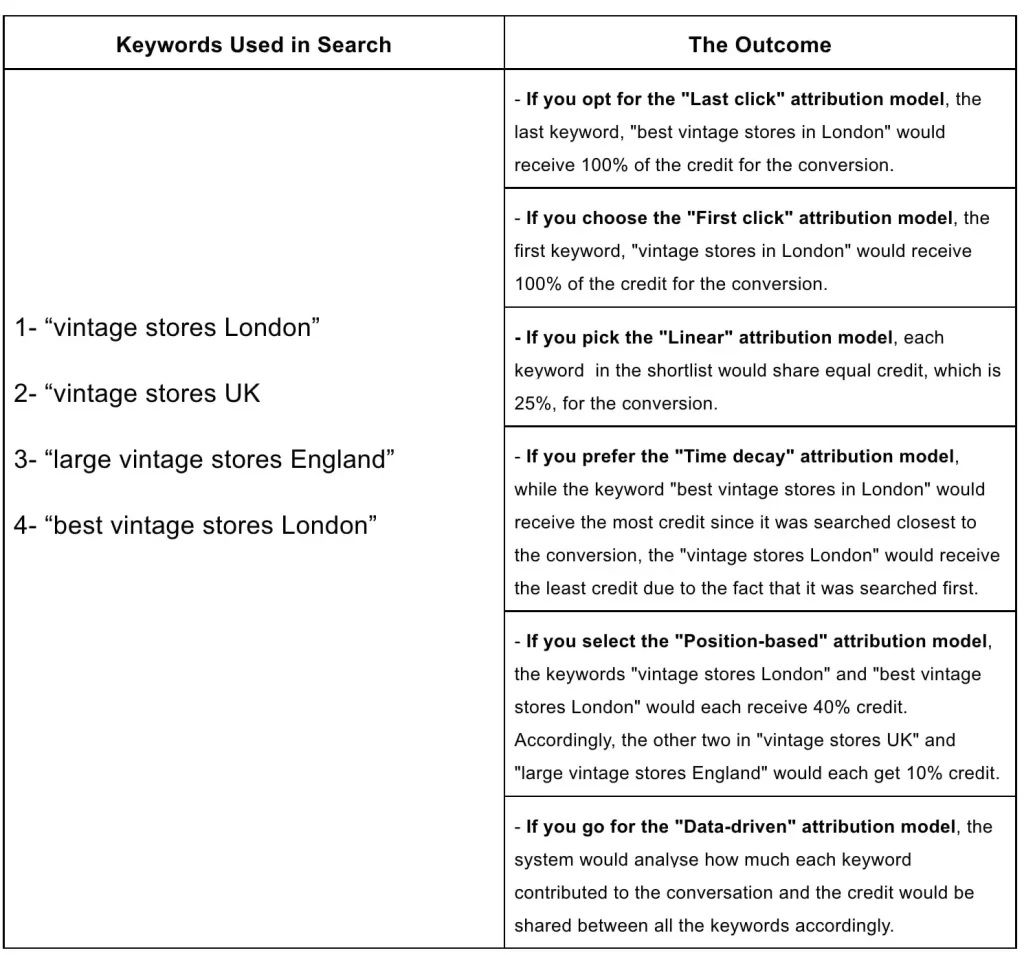
How to Change Attribution Model in Google Ads
Important: As mentioned earlier, you are now only allowed to choose either the Last Click or the Data-driven attribution model - due to Google’s latest update.
Just follow the step-by-step instructions to change your attribution model on Google Ads.
Step 1: Go to Google Ads and click on “Tools & Settings” at the top of the page.
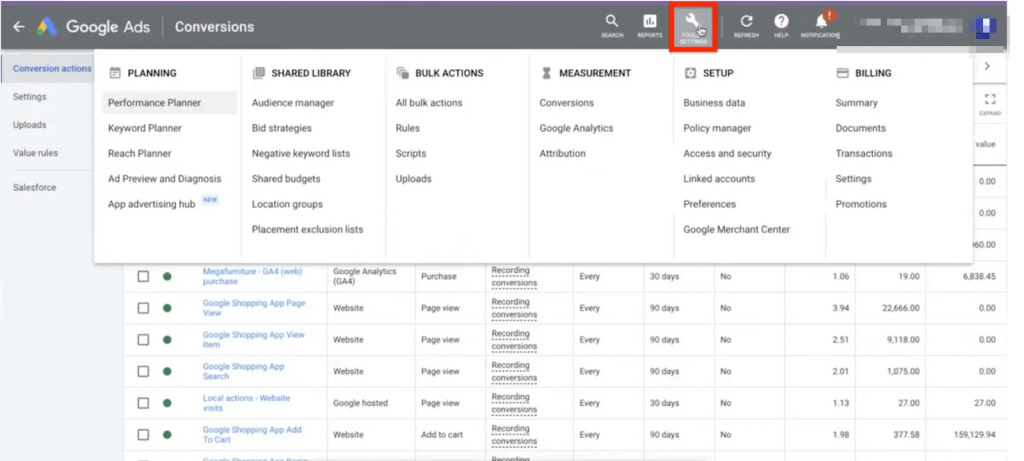
Step 2:Find “Conversions” under the section of measurement.
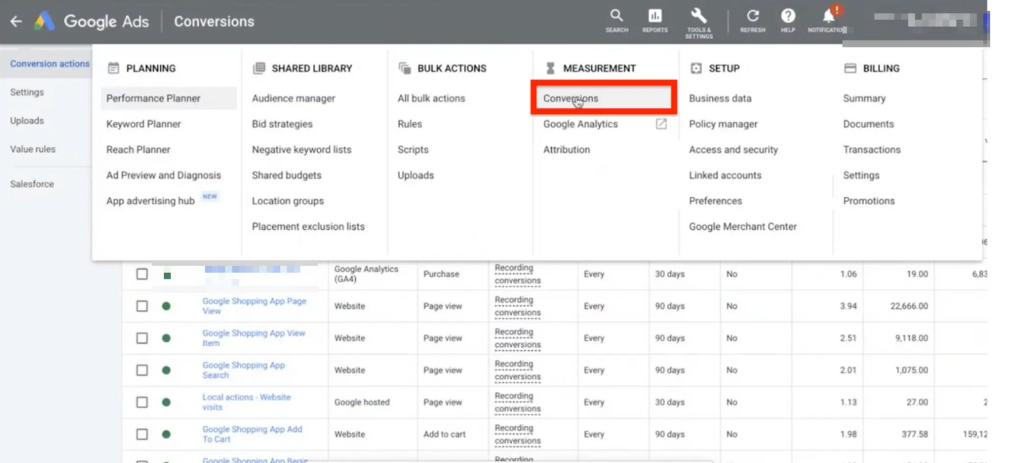 Step 3: Create a new conversion or choose one that already exists.
Step 3: Create a new conversion or choose one that already exists.
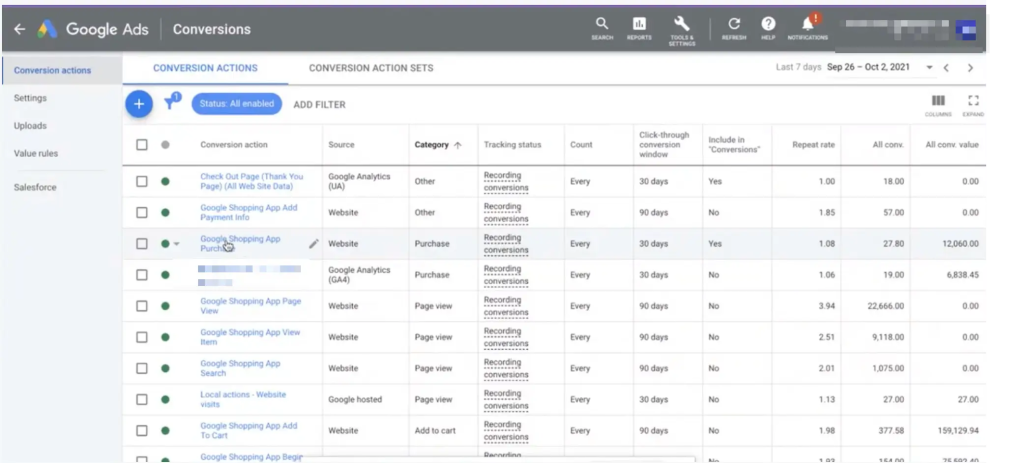 Step 4:See “Attribution model”. Click on “Edit Settings”
Step 4:See “Attribution model”. Click on “Edit Settings”
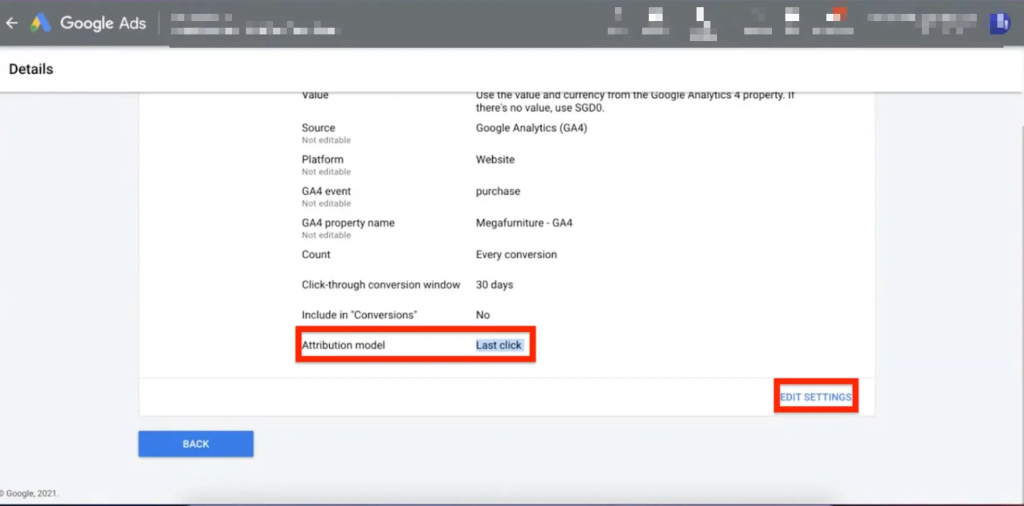 Step 5:Then, you’ll see the attribution models. You can choose either the Last Click or the Data-driven attribution model. Read on for more information and recommendation.
Step 5:Then, you’ll see the attribution models. You can choose either the Last Click or the Data-driven attribution model. Read on for more information and recommendation.

What is the Best Attribution Model for Shopify Merchants?
This is a great question to discuss on, although you no longer have as many options as you did before regarding attribution models.
First of all, you should know that the best attribution model for you as a Shopify merchant depends on your specific needs and goals.
However, there are some important points to consider.
If you have enough data and want to use a dynamic and sophisticated model that can capture the complex interactions between their marketing channels and campaigns, then the data-driven attribution model (as also recommended by Google) may be a good option for you.
Data-Driven Attribution Model
The data-driven attribution model uses machine learning algorithms.
This way, it is considered as one of the most effective ways to analyze your account’s data and assign credit to each touchpoint based on how much it contributed to the conversion.
It adapts to the changes in your customer behavior and preferences over time, which can capture the complex and nonlinear interactions between your marketing channels and campaigns.
After removing the other attribution models, Google recommends the data-driven attribution model claiming that it is the most advanced and reliable model available in Google Ads and Google Analytics 4.
Last Click Attribution Model
The Last Click model is a simple way of measuring the effectiveness of your online advertising.
As mentioned earlier, this model gives all the credit for a conversion to the last ad or channel that the customer clicked on before buying something on your Shopify store, assuming that the last touchpoint was the most important factor in the customer’s decision to convert.
The Last Click model can help you find out which of your marketing channels and touchpoints are most effective in the final stage of the buyer’s journey but it ignores the impact of other touchpoints that may have helped educate or convince customers along their journey.
It can also overvalue some channels or campaigns that may not have a direct cause-and-effect relationship with your conversions.
Conclusion: Google Ads Attribution Models for Shopify Merchants
Google Ads attribution models now come with only two options, assigning credit to your ads and channels that lead to conversions.
Choosing the right attribution model for your Shopify store can help you optimize your campaigns, budget, and strategy based on the full customer journey.
Although there is no one-size-fits-all solution when it comes to attribution modeling, you need to consider the fact that the data-driven attribution model is the one that is recommended by Google due to a couple of aforementioned benefits over the Last Click.
Still, you need to consider your business goals, sales cycle, conversion funnel, and marketing mix when choosing the attribution model for your Shopify store so you can make more informed and accurate decisions about your Google Ads performance and ROI.

































